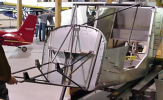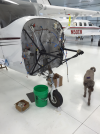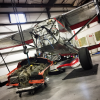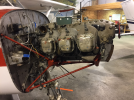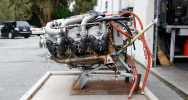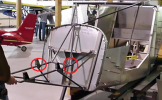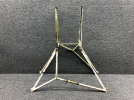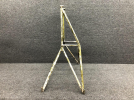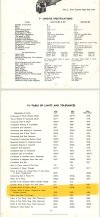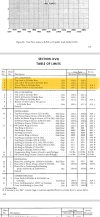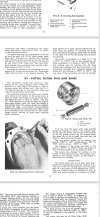As for engine TBOs, even in the standard certificated world they are not legal hard stops. I personally know of many Lycoming 360s and 540s that are well past their TBOs and still going strong. The key IMO is proper routine maintenance using all the tools in the tool kit -- bore scope, oil analysis, filter examination, compression testing, etc, etc. However, there's no panaceas. Even the best cared for engines can be problem children and can have all kinds of recurring expensive issues way before reaching TBO. As with most things there's few absolutes when it comes to engines.
The engine itself--the case, crank, pistons and cylinders, gears--are all robust and very seldom give problems unless the engine is mistreated or neglected. They do not appreciate, for instance, ground-running "to circulate the oil." That adds water to the crankcase via the cold piston/ring/cylinder clearances, and it doesn't get driven off by the heat of flying the thing. That water mixes with the oil and forms acids that eat the engine This chemistry is well-known and the engine manufacturers warn you against such stuff. Cars have extremely close tolerances, as liquid-cooling permits, and they also have PCV systems that constantly purge the crankcase of corrosive gases. An airplane engine is not a car engine and cannot be treated like one.
Water in the case also results in sludge that makes hydraulic valve lifters stick.
Most engine problems are with the accessories. Alternators whose field brushes wear out because the alternator did not get the recommended 50-hour internal inspections. Magnetos that fail for the same reason. Vacuum pumps that fail due to vane wear way beyond limits, because it was either not replaced at the recommended time (for a non-vane-wear-inspectable pump) or because the five-minute inspections on inspectable pumps weren't done at the recommended intervals so as to take a pump out of service once the wear is at limits; this also gets the maximum service out of a pump and I have no idea why people still buy pumps without the inspection ports. Tempest and Rapco both sell pumps with inspection provisions. If the vanes are not worn out, they can't cock in that carbon rotor and jam it and break the pump. It's that simple. And if a pump does fail suddenly, the whole vac system needs cleaning out, as the vacuum in the instrument cases can suck carbon debris back into the lines, debris that then gets sucked into the new pump and shortens its life. There is absolutely no sense to running any of this stuff to failure.
Fuel systems give problems because the various filters in the system never get checked at annual. I have run into several fuel strainers that had obviously not been apart for many years; the bowls were seized onto the head, there was corrosion in the bowl, and the filter screen was filthy. This is a 100 hour/annual thing. There's another filter in the carb's or injection servo's fuel inlet that never gets checked either. It can get dirty and stop the fuel flow. A 200-hour/annual item that doesn't get done. The carb bowl is also supposed to be drained and flushed at annual, another ten-minute job.
So many older engines have only an oil filter screen. Carmakers stopped doing that maybe 70 or 80 years ago. A proper filter catches the stuff that causes engine wear, and there are adapters available from the OEM or via aftermarket STCs to install spin-on filters that make your engine last far longer.
There are engines that run 4000+ hours in operations such as pipeline or powerline patrol. They are run hard every day, and the engines like that. It does not like sitting for months and then pootling around the pattern for an hour on some Saturday afternoon, then sitting for more months. Our flight school airplanes lasted to TBO with compressions still in the high 70s and no metal in the filters, and those engines were flown by ham-handed students, too. Any of those engine cores could have powered a homebuilt for another 1500 hours.
Most expensive problems that arise in well-cared-for engines involve ADs. Some manufacturing defect that has crept in somewhere, and now we have some part that
might be bad and
might fail, and so there
might be a risk that demands replacement. Sometimes it's a fault directly with the engine manufacturer, more often with a contractor that makes parts for the manufacturer, and often with field overhaulers that do something outside the limits of the overhaul manuals.
